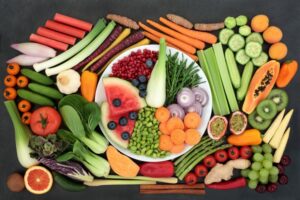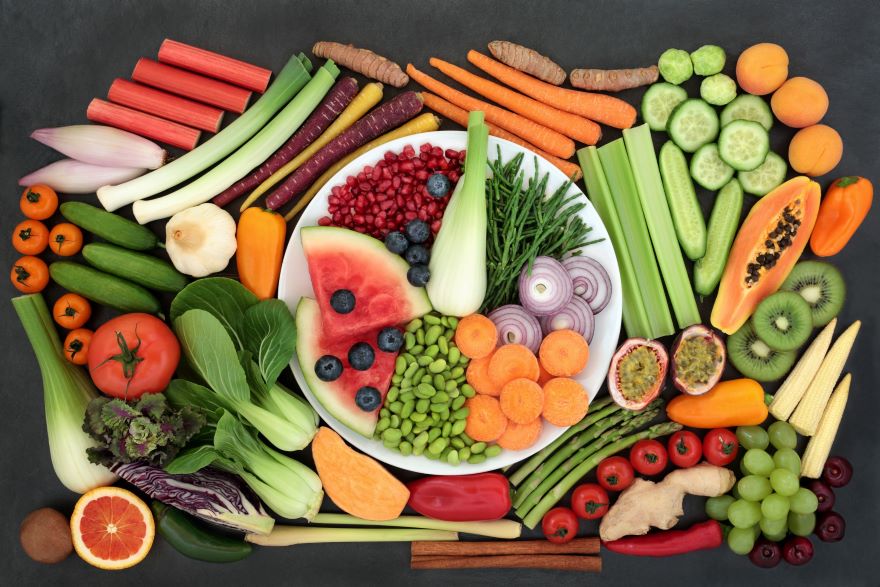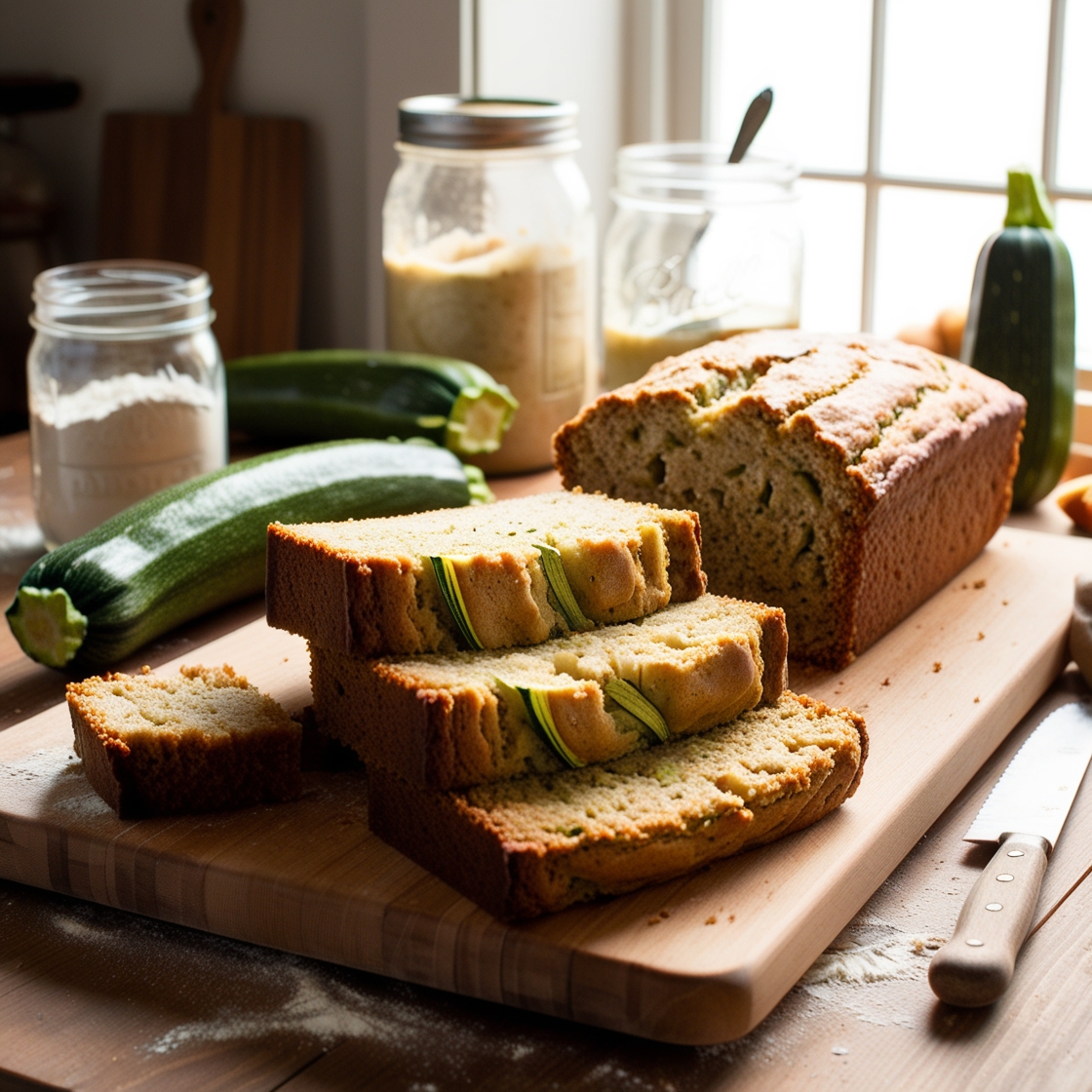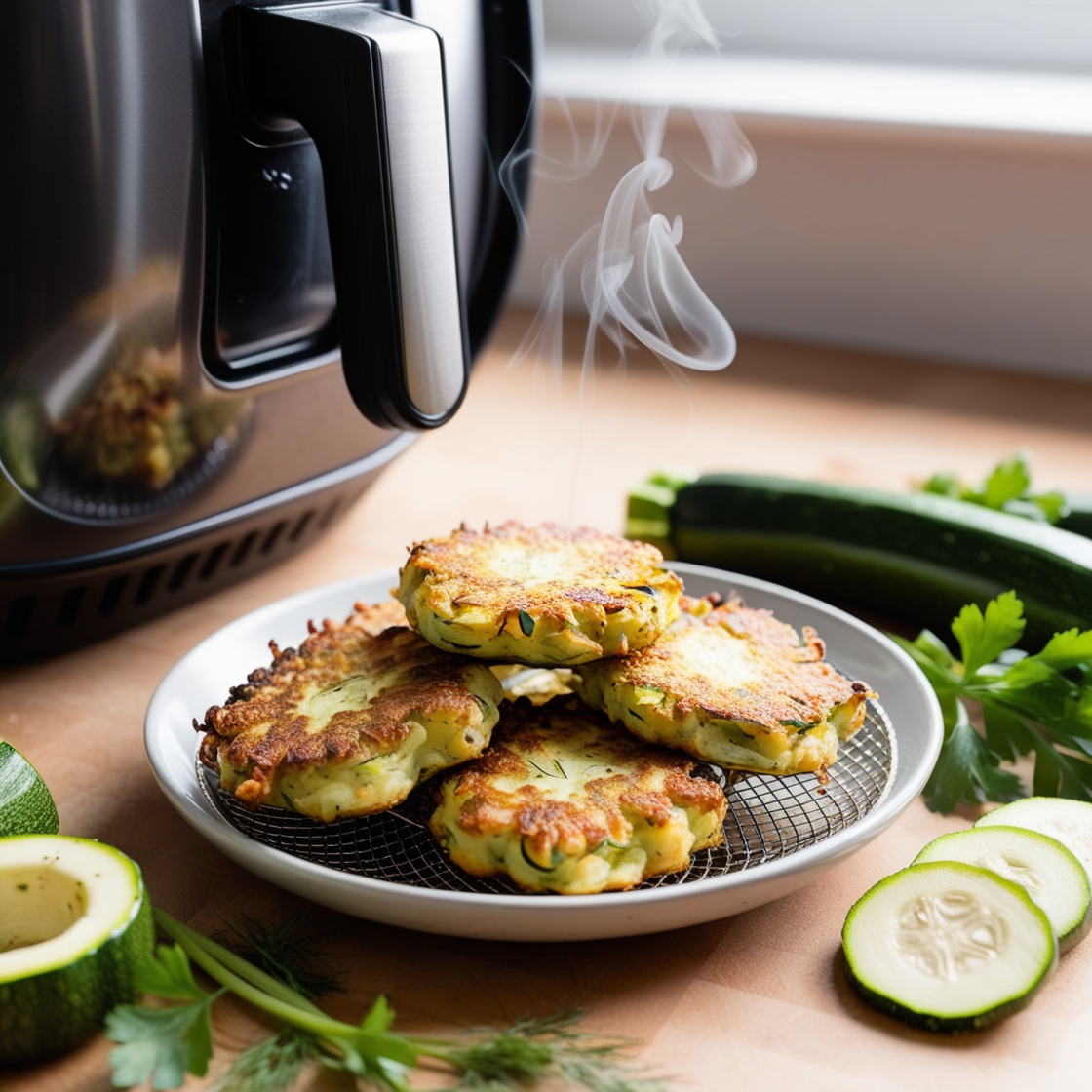The Food Revolution Network offers a rich tapestry of recipes that align with a core mission to promote healthy, ethical, and sustainable food choices. As a passionate advocate for plant-based eating, I appreciate how their resources make transitioning to a whole food plant-based diet both approachable and delectable. The network curates a selection of dishes designed to not only tantalize the taste buds but also to support overall well-being.

Diving into plant-based cuisine through the Food Revolution Network enables me to explore an array of ingredients that contribute to a nourishing meal plan. Their focus on whole foods ensures that every recipe maximizes the health benefits inherent in unprocessed plant ingredients. By sharing cooking techniques and tips, they empower cooks of all levels to create satisfying meals that can positively impact health and contribute to environmental sustainability.
Key Takeaways
- Plant-based eating is central to the recipe offerings.
- The health benefits of a whole food diet are highlighted.
- Cooking tips enhance the accessibility of healthy meals.
Understanding the Food Revolution Network

As someone passionate about nutrition and lifestyle, I find the Food Revolution Network (FRN) a vital resource for those looking to improve their health through diet. FRN is a trove of information on how to embrace a healthier lifestyle by making informed food choices. It’s spearheaded by a mission to educate and empower individuals to consume plant-powered diets and sustainably-sourced foods.
- Healthy Recipes: FRN offers an extensive archive of recipes that promote health without sacrificing flavor. These recipes focus on plant-based ingredients, emphasizing the health benefits of whole foods.
- Cooking Guidance: For those new to healthier eating, FRN provides guidance on how to read a recipe, including tips on cooking techniques and ingredient combinations.
- Accessible Ingredients: An emphasis on accessibility ensures that the recipes feature common supermarket groceries. This approach simplifies the journey towards a health-focused diet.
| Key Component | Description |
|---|---|
| Plant-Based Focus | Recipes rich in fruits, vegetables, nuts, and seeds to enhance overall health. |
| Sustainable Choices | Encouragement to choose environmentally-friendly food options. |
| Health Education | Offering knowledge on the benefits of a healthy diet and lifestyle. |
| Accessible Cooking | Ensures users can find ingredients and understand instructions easily. |
| Nutritional Information | Provides insight into what makes a balanced plate. |
In essence, I see FRN as a bridge that connects people with the knowledge they need to lead a life that’s as good for their bodies as it is for the planet. Through this network, I’ve accessed recipes and advice that aid in nurturing a holistic, healthy, and responsible eating regimen.
Benefits of Plant-Based Recipes

In my exploration of plant-based eating, I’ve found that these recipes offer substantial health benefits directly linked to their whole food ingredients.
Nutrient-Dense Choices
When I choose plant-based recipes, I prioritize meals that are rich in nutrients. These typically include a variety of beans, leafy greens, and whole grains. Beans, for instance, are a remarkable source of protein and fiber, two essential components for a balanced diet. Leafy greens like spinach and kale provide a host of vitamins and minerals, such as iron and calcium. Additionally, whole grains contribute to this mix by providing essential B vitamins and fiber, promoting digestive health and satiety.
Mitigating Health Risks
Adopting plant-based recipes has been linked to a decrease in the risk of chronic disease, including heart disease. A diet rich in plant-based foods is naturally lower in saturated fats, which helps in maintaining healthy cholesterol levels. Furthermore, the anti-inflammatory properties of certain plant foods can aid in reducing inflammation in the body, a precursor to multiple health conditions. Through my own research and experiences, I’ve found evidence supporting plant-based diets as a means to support long-term health and wellness.
Exploring Ingredients

When I craft recipes for the Food Revolution Network, I focus on the nutritional richness and flavor diversity that whole foods provide. My kitchen is a canvas where fruits and vegetables, along with plant-based proteins, mingle to create healthful and satisfying meals.
Fruits and Vegetables
In my culinary experiments, I lean heavily on a vibrant array of fruits and vegetables. For example, I might toss spinach into a smoothie to add a punch of iron, fiber, and vitamins A and C. I relish the versatility of sweet potatoes, using their carotenoid-rich flesh to construct a heartier Plant-Powered Lunch Bowl, a dish that also celebrates the crispness of radishes.
- Apples offer a sweet crunch in salads or a tart component in a morning oats bowl.
- Beets are fantastic for their earthy flavor and nutrients, roasted or whisked into a colorful hummus.
- Cauliflower is another favorite; it’s incredibly adaptable, useful for making anything from a creamy soup to a satisfying pizza crust.
Plant-Based Proteins
Proteins derived from plants are an integral part of my recipes. Lentils and beans are staple ingredients, perfect for adding texture and protein to soups and salads. They are a wholesome base for many multicultural recipes, exemplifying a food group that’s sustainable and nutrient-dense.
- Tofu is my go-to for a protein-packed addition to stir-fries and scrambles.
- I appreciate tempeh for its firm texture and nutty taste, which works wonders in plant-based versions of traditional meat-centric dishes.
With each recipe, I aim to enlighten the palate through an exploration of these components, ensuring that every dish not only nourishes but also delights the senses.
Whole Food Plant-Based Diet Essentials

When transitioning to a whole food plant-based diet, I find it’s crucial to focus on unprocessed or minimally processed foods. This ensures that I’m getting all the nutrients that my body requires without the added oils, refined sugars, and preservatives found in many processed foods.
Key Components
- Fruits & Vegetables: The cornerstone of any plant-based diet; I include a variety of colorful options.
- Legumes: Lentils, beans, chickpeas, and peas are staple sources of protein.
- Whole Grains: Quinoa, brown rice, whole wheat, and oats provide essential carbohydrates and fibers.
- Nuts & Seeds: They’re great for snacking but also essential for fats, proteins, and micro-nutrients.
Trying New Recipes
I rely on a plethora of vegan recipes that challenge the misconception that plant-based dishes are bland. For example, Food Revolution Network offers comforting recipes that prove whole-food ingredients can also be indulgent.
Meal Planning
- Breakfast: I start my day with oatmeal or smoothies, and banana oat pancakes are a regular treat.
- Lunch & Dinner: I go for variety, from hearty salads and soups to stir-fries with tempeh or tofu.
- Snacks: Fruit, homemade hummus, and air-popped popcorn are my go-tos.
Simplifying Shopping
Creating a weekly meal plan helps me buy only what I need, reducing waste and ensuring a rainbow of nutrients. My main tip is to stick to the outer aisles of the grocery store where fresh produce is typically located, making whole food, plant-based choices easier.
Cooking Techniques and Tips

In my kitchen, I’ve learned that mastering a few key techniques can transform simple ingredients into spectacular meals. My advice focuses on enhancing taste and embracing kitchen gadgets to make cooking more efficient and enjoyable.
Creating Flavorful Meals
To create flavorful meals, I start with a foundation of aromatic ingredients. Garlic is a go-to for its ability to impart a rich, savory depth to dishes. I recommend mincing garlic finely to evenly distribute its pungent taste. Another of my favorites is turmeric, a golden-yellow spice that introduces an earthy flavor and anti-inflammatory benefits. Sprinkling cinnamon can add a warm, sweet note to savory dishes—it’s not just for desserts!
- Garlic Tip: Sauté minced garlic over low heat until it’s golden for a sweeter, more mellow flavor.
- Turmeric Tip: Combine turmeric with black pepper to enhance absorption and unlock its health properties.
- Cinnamon Tip: Add cinnamon to your stews or roasted vegetables to create a nuanced flavor profile.
Using a Spiralizer
I’ve found a spiralizer to be an invaluable tool in my kitchen, particularly for crafting healthy and visually appealing meals. It’s perfect for turning vegetables like zucchini into zucchini noodles, also known as zoodles, which are a nutritious, low-carb alternative to pasta. With a spiralizer, you can also create crispy curly fries from potatoes or sweet potatoes.
- Zucchini Noodles:
- Spiralize the zucchini into noodles, making sure to apply consistent pressure for even strands.
- Briefly cook the noodles in a hot pan with a touch of oil to maintain their crisp texture and bright color.
- Curly Fries:
- Opt for the thicker blade when spiralizing potatoes for a sturdier fry.
- Toss the potato spirals with a little oil and your choice of seasoning before baking until golden and crisp.
I always encourage home chefs to experiment with these spices and tools to enjoy a healthier version of their favorite dishes while getting creative in the kitchen.
Recipe Categories Overview

As a seasoned food enthusiast, I’m excited to walk you through the Food Revolution Network’s diverse recipe categories. These curated collections cater to various dietary needs and preferences, ensuring that everyone has the opportunity to enjoy nourishing and flavorful meals.
Protein-Packed Meals
In this section, you’ll find recipes that are abundant in proteins such as tofu, beans, and nuts. For instance, the Pink Cauliflower Soup is more than just visually appealing; it’s a protein powerhouse with tofu as one of its primary ingredients.
Vegan Stir-Fry Variations
The vegan stir-fry recipes are a testament to the versatility of plant-based cooking, featuring a range of ingredients from mushrooms to eggplant. Whether you’re looking for a quick weeknight dinner or a healthy meal that doesn’t skimp on flavor, these Vegan Stir-Fry Variations will impress.
Sweet Treats Without Sugar
Indulge your sweet tooth responsibly with desserts crafted from whole fruits like bananas and dates, serving as natural, healthy sweeteners. These sugar-free desserts allow for guilt-free enjoyment without compromising on taste.
Classic Comfort Foods Redefined
Who says comfort food can’t be vegan? Discover twists on favorites like vegan pizza and vegan mac and cheese, proving that classic comfort foods can be redefined to suit a plant-based lifestyle. Explore recipes like the inventive Tofu Scramble Breakfast Wrap that elevates traditional breakfast comfort food to a new level.
Meal Planning and Lifestyle Changes

My journey into plant-based eating began with recognizing the need for lifestyle adjustments. Committing to a dietary revolution, I found that meal planning was instrumental. Here’s how I approach it:
1. Weekly Meal Prep:
Every Sunday, I dedicate time to preparing meals for the week. This ensures that I always have healthy, plant-based options ready, reducing the temptation to deviate from my dietary habits.
- Breakfast: I rotate between oatmeal bowls, smoothies, and Tofu Scramble Breakfast Wraps, incorporating a variety of fruits and vegetables.
- Lunch and Dinner: I batch-cook staples like quinoa, roast an assortment of veggies, and prepare legumes. Dishes such as Slow Cooker Greens, Beans, and Tempeh Sausage Soup become my go-to.
2. Smart Grocery Shopping:
Armed with a grocery list, I shop for whole foods, minimizing processed products. I focus on seasonal produce to ensure freshness and cost-effectiveness.
3. Recipe Exploration:
To keep me inspired, I explore new recipes from Food Revolution Network regularly. It’s thrilling to discover meals like the Sticky Black Rice with Mango, which fuse health with exotic flavors.
4. Mindful Eating:
I consume food with purpose and presence, appreciating the flavors and textures, which enhances my overall meal experience.
Adopting this plant-based lifestyle isn’t just a diet change; it’s a holistic approach to living. Consistency in meal planning and making conscientious food choices have been pivotal in sustaining my new dietary habits.
Overcoming Obstacles to Healthy Eating

In my journey to maintain a healthy diet, I’ve encountered several challenges, and I’ve learned strategies for overcoming them. Here are some ways I tackle common obstacles:
Food Myths: I educate myself with credible information. For example, some believe you can’t get enough protein from plant-based sources, but by exploring a variety of nutritious recipes, I’ve learned how to incorporate protein-rich foods, like lentils and quinoa, into my meals.
Eating Out: I make informed choices at restaurants. Before I go out, I look at the menu online and decide on healthy options in advance. This helps me to stick to my nutritious eating plan even when I’m not preparing the meal myself.
Social Situations: I prioritize my health goals. When attending gatherings, I offer to bring a wholesome dish. This ensures I’ll have at least one healthy option available, and it often introduces others to delicious, healthy dinner recipes they may not have tried otherwise.
Cravings: I listen to my body and find alternatives. If I’m craving something sweet, I reach for fruit or a small piece of dark chocolate instead of a sugar-laden dessert. It satisfies my craving without derailing my efforts.
By remaining consistent and adaptable, I effectively manage these challenges. I commit to my health by planning ahead, educating myself, and seeking out resources that help me reinforce my choices. My experience underscores the importance of persistence and flexibility while pursuing a healthy diet.
Community and Support

In my exploration of the Food Revolution Network, I’ve discovered that community and support are key elements ingrained in its fabric. Participating in online forums provided by the network has allowed me to interact with like-minded individuals who are passionate about plant-based eating and sustainable living. The sense of camaraderie in these spaces is palpable, and I’ve found the encouragement to stick with my healthy lifestyle goals.
Moreover, I’ve noticed that the network often emphasizes the value of local groups. By connecting with others in my area, I’ve managed to share experiences and even swap recipes, making my journey towards better nutrition both social and enjoyable.
| Benefits | Description |
|---|---|
| Shared Learning | Gleaning insights from others’ experiences. |
| Accountability | Staying on track with group support. |
| Access to Resources | Recipes, science-based nutrition information provided by the network. |
| Culinary Inspiration | Diverse, delicious plant-based recipes. |
The support systems that the Food Revolution Network advocates for have proven to be a robust backbone for my health endeavors. Whether I need advice on a recipe or tips on how to handle dietary changes, there are always resources and individuals ready to assist.
Overall, my experience with the Food Revolution Network has taught me that a supportive community is invaluable when adopting a healthier lifestyle. Whether it’s through forums, local meetups, or the structured support from the network itself, I’ve found that these relationships and tools have been instrumental in my food journey.
Taking Action

As a member of the Food Revolution Network (FRN), my approach to a healthier lifestyle begins with the food on my plate. I’m committed to using meal plans that align with FRN’s mission of nutritious, sustainable, and ethical eating. Understanding that every meal is a chance to impact my health and the planet, I carefully select recipes that are not only delicious but also promote well-being.
My Weekly Meal Planning Strategy:
- Monday to Friday: I incorporate nutrient-dense dishes, emphasizing plant-based ingredients.
- Saturday: I experiment with new dinner recipes that I can share with friends and family.
- Sunday: I prepare a batch of healthy options to simplify my upcoming week.
Commitment to Change:
- Replace processed foods with whole foods as often as possible.
- Dedicate time each week to learning about food sustainability and health.
- Share this journey with my community, advocating for food education and reforms, like those suggested in school lunch programs.
By following this methodical approach to crafting my meals and my lifestyle choices, I’m taking an active stance on personal and community health. Each recipe I choose from FRN and each ingredient I pick echoes my dedication to this cause, creating ripples in the larger food system.
Useful Resources
When pursuing a healthier lifestyle, having reliable resources can enhance your journey. My collection of resources provides access to various tools ranging from ebooks and cooking guides to nutrition information and workshops aimed at promoting a whole foods, plant-based diet.
Ebooks and Guides
I strongly believe that education is key to making informed dietary choices. Through comprehensive ebooks, one can learn about the benefits of plant-based eating. For instance, understanding the improved prognosis in cancer survivors associated with a diet rich in whole grains and fiber can be pivotal.
Cooking Guides
Simplifying the kitchen experience, my cooking guides offer practical tips on preparing nutritious meals. Finding the right balance in your meals is crucial for weight loss and overall health. Strategies for effective weight loss through a plant-based diet are just one of the transformations these resources can facilitate.
Nutrition Information
It’s essential to nourish the body with well-rounded meals. My tips highlight the importance of dietary patterns low in saturated fat, which could, for example, reduce daytime sleepiness in patients with OSA. Understanding the nutritional values of edible plants, including wild variants, enriches this knowledge base, fostering variety in your diet.
Workshops
Interactive workshops play an integral part in applying this knowledge. Participating in shared learning experiences can provide motivation and clarity, reassuring you that you’re on the right path.
Remember, every resource is a stepping stone towards a healthier you. Empower yourself by utilizing these tools to harness the full potential of a plant-based lifestyle.
Frequently Asked Questions

In this section, I cover some common inquiries regarding the recipes and content provided by the Food Revolution Network. You’ll find straightforward answers to help you get the most out of their plant-based and health-focused resources.
What nutritious dinner recipes are recommended by the Food Revolution Network?
The Food Revolution Network emphasizes nutritious, sustainable, and healthy dinner options. I often find their selection of plant-based recipes perfect for those looking to balance taste with health benefits.
How can I access Food Revolution Network recipes through their app?
Currently, there’s no specific app for the Food Revolution Network. However, their website is mobile-friendly and provides an extensive archive of recipes which is easily accessible on various devices.
What were the key takeaways from the Food Revolution Summit 2023?
The Food Revolution Summit 2023 concentrated on the importance of integrating real superfoods into your diet and included educational deep dives into the health benefits of these foods, along with new and tasty recipes.
How do I log in to the Food Revolution Network member area?
To log into the member area of the Food Revolution Network, visit their support page where you’ll find directions for login or troubleshooting if you are experiencing issues.
How does the Food Revolution Network ensure the credibility of its content?
The Food Revolution Network maintains the credibility of its content by offering evidence-based nutritional information and recipes engineered by health experts. Their commitment to factual and research-backed guidance is a cornerstone of their mission.

*We may earn a commission for purchases made using our links. Please see our disclosure to learn more.



